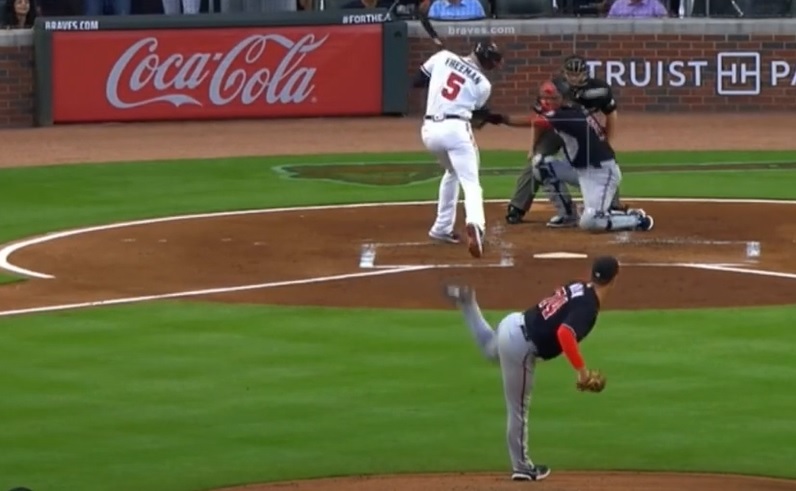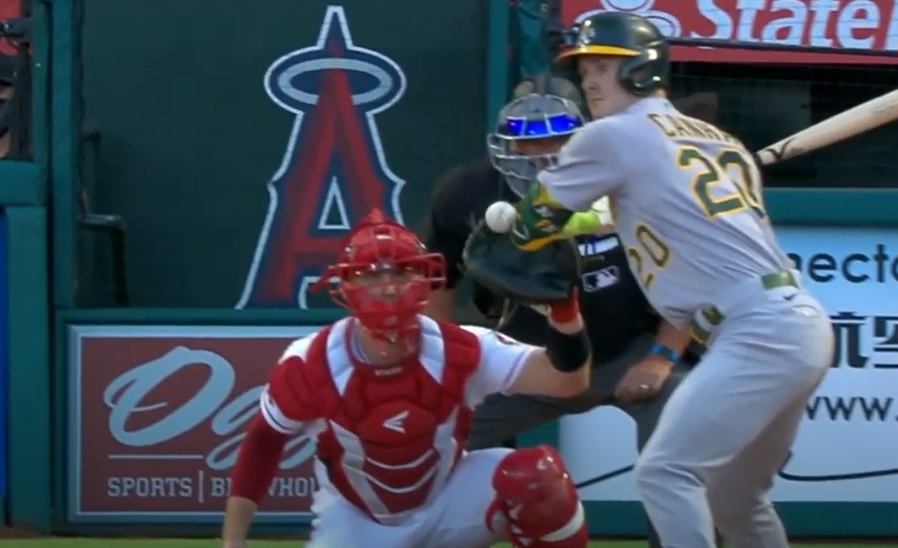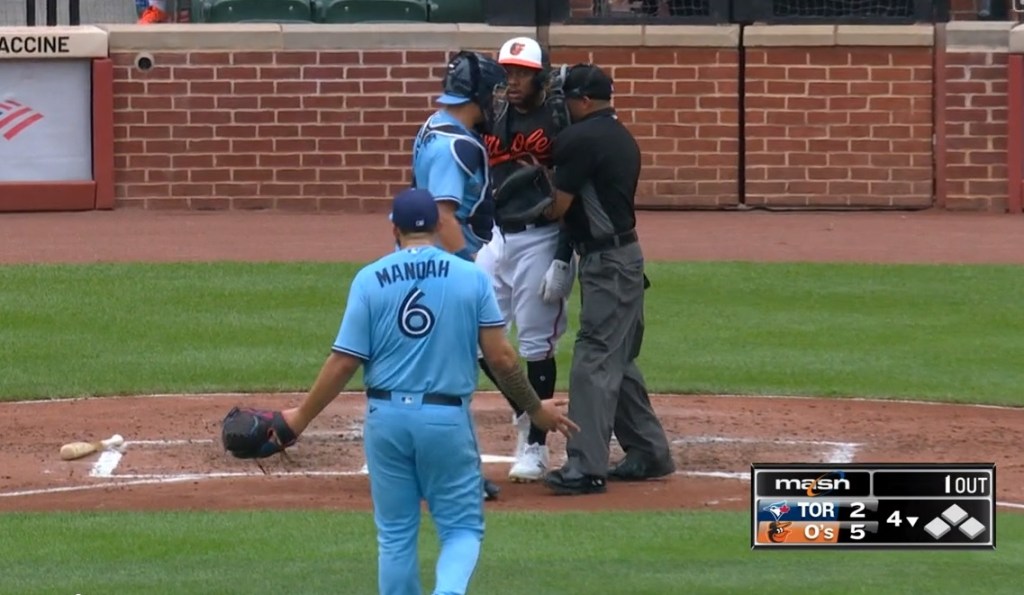
It wasn’t going to be a thing. Kevin Kiermaier slid home against the Blue Jays on Monday, and in so doing managed to inadvertently knock loose the card on which Toronto catcher Alejandro Kirk kept his team’s game plan for Tampa Bay hitters. Kiermaier looked down, saw the thing, snatched it up as subtly as possible and returned to his dugout.
The Blue Jays weren’t pleased. They wanted their card back, and sent a bat boy to the Rays dugout to ask for its return. Why the bat boy and not an actual team member? Who knows? Did low-keying the personnel decision affect Tampa Bay’s response? Well, whoever had it on the Rays’ bench refused to give it up, so maybe.
From where I sit, this one is easy to legislate. Kiermaier stole Toronto’s signs in the truest sense of the word. His actions were pure gamesmanship, and if Toronto decides that it wishes to not have its signs stolen in the future, it should do a better job of protecting them. (Like, for real. My kid’s travel ball team wears wristbands with plays in them and has managed to not lose a single card in three years. It ain’t that tough. Then again, Kiermaier himself said that just last week he lost his own card while sliding into second, and Tigers infielder Niko Goodrum tried to grab it. So who knows, maybe this some sort of epidemic we’re just learning about now.)
At first, this appeared to be a non-issue. Keirmaier stumbled through a postgame monologue about how he didn’t even know what it was when he picked it up and then he gave it to the Tampa Bay equipment manager and boy golly it was all just so confusing at the time. Very little of what he said was believable, but still, Rays manager Kevin Cash met with Jays manager Charlie Montoyo before Tuesday’s game, apologized for the whole affair and returned the card. Montoyo called it “agua under the bridge.”
Fine. I wasn’t even gonna post about it. And then the Jays had to go and do something stupid like drill Kiermaier in response.
It happened in the eighth inning when, with Tampa Bay leading, 7-1, Ryan Bourecki planted a 93-mph heater into Kiermaier’s back. The pitcher was ejected (as was Toronto pitching coach Pete Walker, who just about lost his mind when Borucki got the thumb, despite that being the most obvious outcome). Benches emptied, though no punches were thrown.
Bourecki later called it a mistake, something that nobody in the Rays dugout—particularly Kiermaier or Cash—believed. Twitter agrees with them:
“I hope we play those guys [in the playoffs], I really do,” Kiermaier said. “I hope we play them. The motivation’s there.”
Just wait to see what happens if the Rays are eliminated and the Jays move on. Who wants to bet on some of Toronto’s state secrets being spilled to whatever team they end up playing? Even if the card is entirely specific to Tampa Bay, there are certainly things to learn for any willing opponent.
The Rays could have been chivalrous and returned the card immediately, and it would have been a nice story. This is the big leagues, though, where teams scramble to gain any advantage within the rules (and sometimes beyond). Thinking that Tampa Bay—or any team—would do otherwise is simply folly for Toronto.
Update 9/24: Borucki has been suspended for three games.







